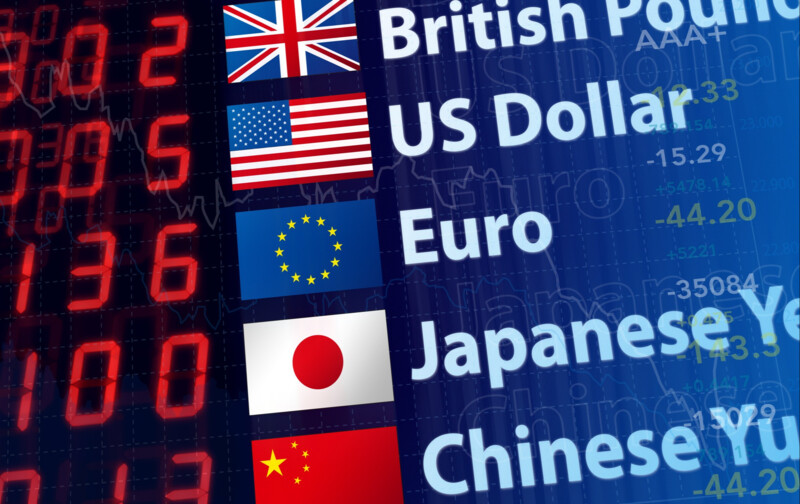Les entreprises dont l’activité s’étend à l’international sont amenées à fixer leurs prix dans différentes monnaies. Pour préserver leurs marges, elles ont tout intérêt à se prémunir contre le risque de change entre devises. Plusieurs moyens existent pour réduire les inconvénients encourus lors de la fluctuation des cours.
Le marché des changes bousculé par la guerre en Ukraine
Le marché des changes, sur lequel se retrouvent les participants désireux de vendre ou d’acheter une devise contre une autre, a beaucoup évolué ces dernières années. Selon la Banque des règlements internationaux (BRI), en seulement 3 ans, l’activité a bondi de 30 % pour atteindre un record de 6 590 milliards de dollars par jour.
La guerre en Ukraine a profondément impacté les cours de change. En effet, en 2 mois, le rouble est passé du statut de la plus faible à la plus forte des monnaies gagnant près de 12 % contre le dollar et 21 % contre l’euro. Il faut dire que dans le contexte actuel, les transactions impliquant le rouble diminuent fortement, aucune banque ne prenant le risque de coter la devise pour des tailles significatives.
Le risque de change doit donc être appréhendé par les investisseurs et entreprises engagés dans des transactions, des placements ou des financements en devises étrangères.
Renforcer la couverture contre le risque de change
Le risque de change peut être défini comme l’incertitude du taux de change d’une devise par rapport à une autre. Les entreprises qui réalisent des opérations à l’international font face à trois principaux types de risques :
- Le risque de change de transaction : il correspond à un mouvement défavorable du taux de change entre la conclusion du contrat et la date de règlement.
- Le risque de change de conversion : il peut survenir lorsque le cours de la devise du pays dans lequel est implantée l’entreprise est défavorable.
- Le risque de change économique : il concerne surtout les entreprises étrangères dont la compétitivité peut être affectée à la suite d’une variation défavorable de leur devise.
Pour se prémunir contre le risque de change, les entreprises qui démarrent à l’export ont tout intérêt à facturer en euros afin de déporter ce risque sur le client. L’acheteur verra donc le prix évoluer d’un jour à l’autre en fonction du taux de change.
Autre possibilité : définir le taux de change avec le client en actant dans le contrat commercial les cours minimum et maximum entre les deux devises. Cette méthode permet au vendeur de sécuriser sa marge commerciale en cas d’effondrement de la devise étrangère.
Enfin, il est possible de réduire le risque de change en souscrivant une assurance. Bpifrance commercialise par exemple une « assurance Change Négociation » permettant de fixer un cours de change à tout moment de la période de négociation et jusqu’au dernier terme de paiement. De leur côté, les banques proposent des placements à terme qui verrouillent le cours à une date future.
